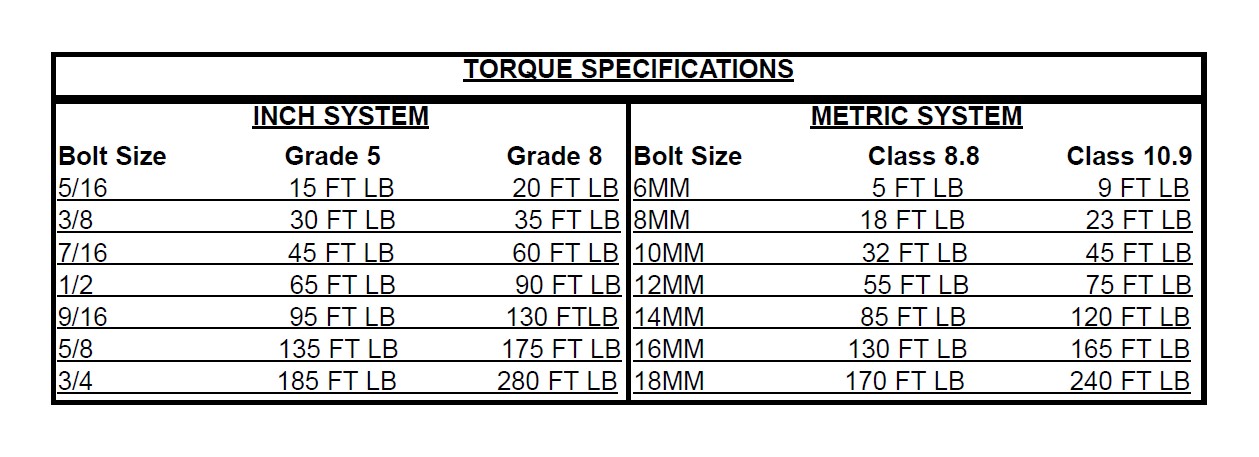

How to Install SkyJacker 2.5 in. Softride Suspension Lift Kit w/ Black MAX Shocks (07-17 Wrangler JK 4 Door) on your Jeep Wrangler
Tools Required
- Safety Glasses
- Metric / Standard Wrenches & Sockets
- Assorted Drill Bits
- Floor Jack
- Jack Stands
- Measuring Tape
- Torque Wrench

Shop Parts in this Guide
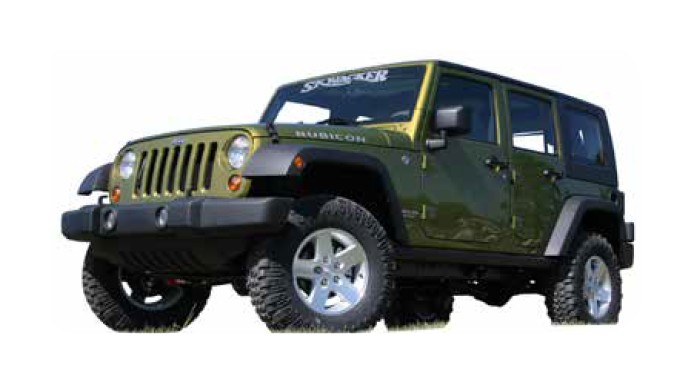
Before beginning the installation, thoroughly & completely read these instructions & the enclosed driver’s WARNING NOTICE. Affix the WARNING decal in the passenger compartment in clear view of all occupants. Please refer to the Parts List to insure that all parts & hardware are received prior to the disassembly of the vehicle. If any parts are found to be missing, contact SKYJACKER® Customer Service at 318-388-0816 to obtain the needed items. If you have any questions or reservations about installing this product, contact SKYJACKER® Technical Assistance at 318-388- 0816.
Make sure you park the vehicle on a level concrete or asphalt surface. Many times a vehicle is not level (side-to-side) from the factory & is usually not noticed until a lift kit has been installed, which makes the difference more visible. Using a measuring tape, measure the front & rear (both sides) from the ground up to the center of the fender opening above the axle. Record this information below for future reference.

IMPORTANT NOTES:
• This lift is determined from the amount of lift to the front of the vehicle, while only lifting the rear to a position level with the front.
• If larger tires (10% more than the stock diameter) are installed, speedometer recalibration will be necessary. Contact your local Jeep dealer or an authorized dealer for details.
• After installation a qualified alignment facility is required to align the vehicle to the OEM specifications.
Component Box Breakdown:
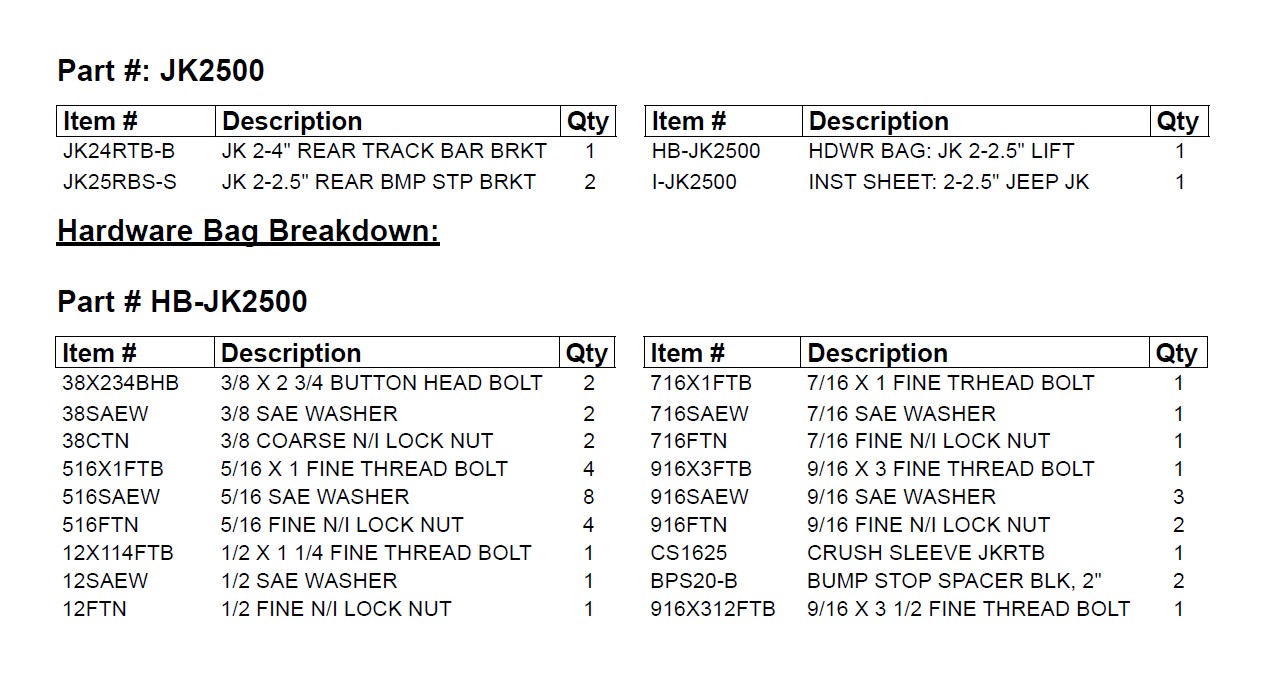
Front Installation:
1. With the vehicle on flat level ground, set the emergency brake, & block the rear tires / wheels.
2. Raise the front of the vehicle & support the frame rails using jack stands.
3. Remove the front tires / wheels.
4. Disconnect the OEM front sway bar end links using a 18mm socket.
5. Disconnect the OEM front track bar from the axle using a 21mm socket. (See Photo # 1)
6. If installing a new Skyjacker Steering Stabilizer (Part # 7003), remove the OEM steering stabilizer using a 18mm socket. (See Photo # 2)
7. Remove the OEM front shocks using a 18mm socket.
8. Lower the differential & remove the OEM front coil springs. (See Photo # 3)
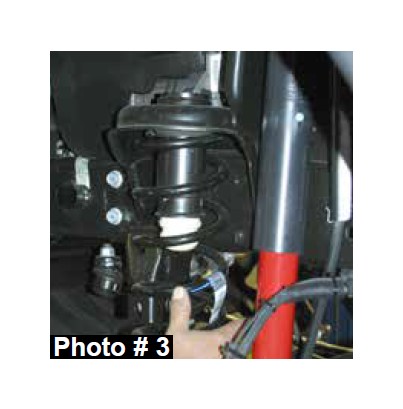
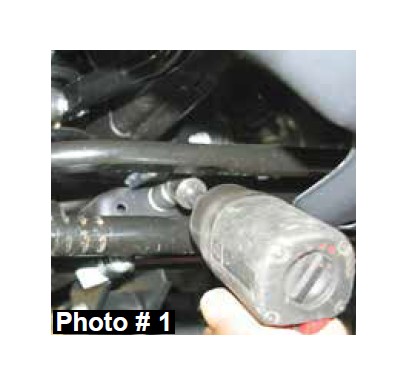
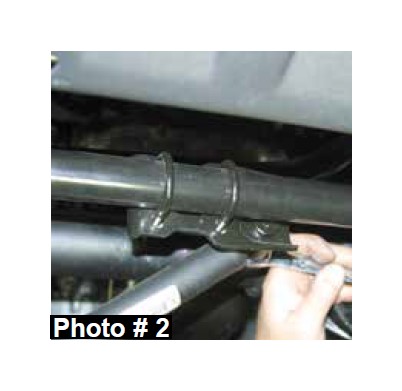
9. Place the new Skyjacker bump stop spacers on the center of the OEM bump stop pad located on the front axle. Mark & drill using a 25/64" drill bit. (See Photo # 4)
10. Install the new bump stop spacers & new Skyjacker front coil springs. Attach the new bump stop spacers to the axle using the supplied 3/8" x 2 3/4" button head bolts, washers, & nuts. (See Photo # 5)
11. Raise the differential in order to load the new front coil springs & attach the OEM front track bar to the axle using the OEM hardware.
12. Attach the OEM front sway bar end links using the OEM hardware.
13. If installing a new Skyjacker steering stabilizer (Part # 7003), install it at this time. (See Photo # 6)
14. Install the new Skyjacker front shocks using the supplied hardware. (See Photo # 7)
15. Install the front tires / wheels & lower the vehicle to the ground.
Rear Installation:
16. Block the front tires / wheels, raise the rear of the vehicle, & properly support the frame rails using jack stands.
17. Remove the rear tires / wheels.
18. Remove the OEM rear shocks using a 16mm socket. (See Photo # 8)
19. Disconnect the OEM rear track bar from the axle using a 21mm socket. (See Photo # 9)
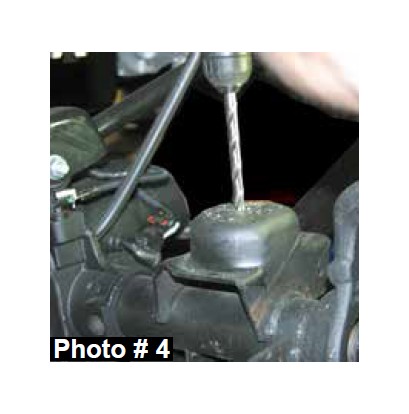
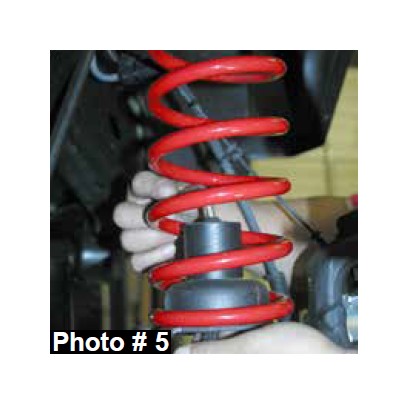
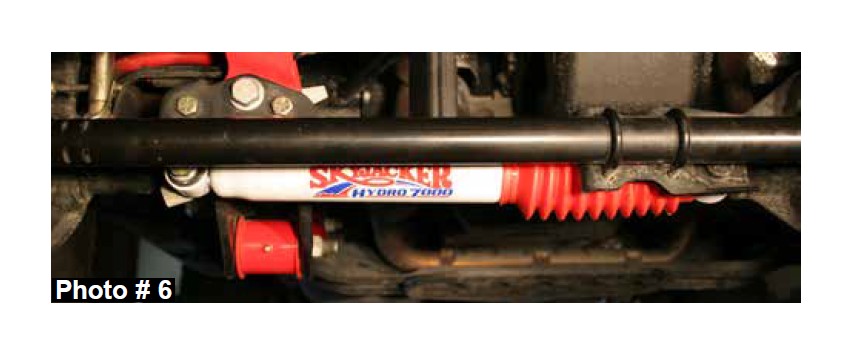
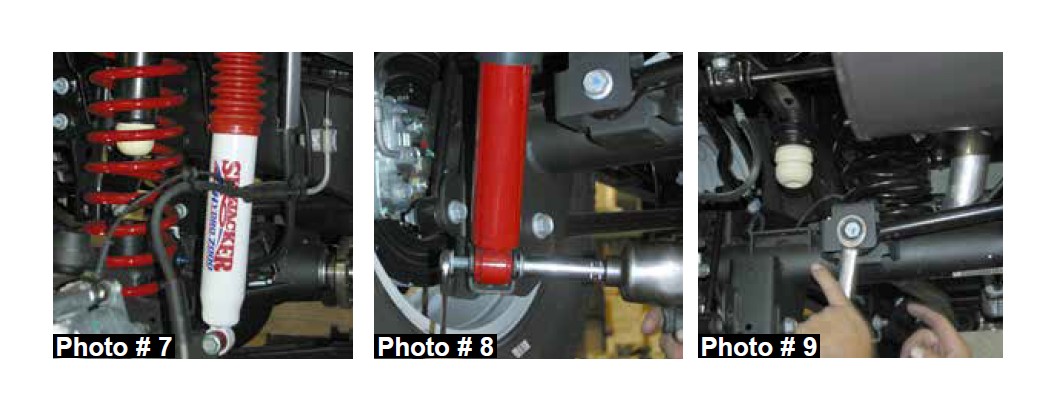
20. Disconnect the OEM rear sway bar end links using a 18mm socket.
21. Disconnect the OEM ABS line & brake line from the frame. (See Photo # 10)
22. Lower the differential & remove the OEM rear coil springs.
23. Place the new Skyjacker rear track bar bracket over the OEM track bar bracket on the axle. With the new track bar bracket seated flush, clamp the new track bar bracket in place, mark with a center punch, & drill the new center mounting holes using a 15/32" drill bit. (See Photo # 11)
24. Install the new track bar bracket using the supplied 7/16" x 1" fine thread bolt, washer, & nut. (See Photo # 12)
25. It will be necessary to drill through the driver side bottom of the OEM track bar bracket & through the new track bar bracket. Drill using a 17/32" drill bit. Once drilled, install the supplied 1/2" x 1 1/4" fine thread bolt, washer, & nut. Install the supplied 9/16" x 3 1/2" bolt, washers, & nut at the bottom location being sure to use the supplied crush sleeve. (See Arrow in Photo # 13)
26. Install the new Skyjacker rear coil springs. Note: Be sure to re-use the OEM upper rubber isolator pads.
27. Attach the new Skyajcker rear bump stop spacers to the OEM location on the axle using the supplied 5/16" x 1" fine thread bolts, washers, & nuts. (See Photo # 14) Note: Be sure to install the new bump stop spacers so the angled end is towards the rear of the vehicle.
28. Raise the differential in order to load the new rear coil springs & attach the OEM rear track bar to the lower mounting hole of the new rear track bar bracket using the supllied 9/16" x 3" fine thread bolt, washer, & nut.
29. Attach the OEM rear sway bar end links using the OEM hardware.
30. Attach the OEM ABS line & brake line to the frame using the OEM hardware.
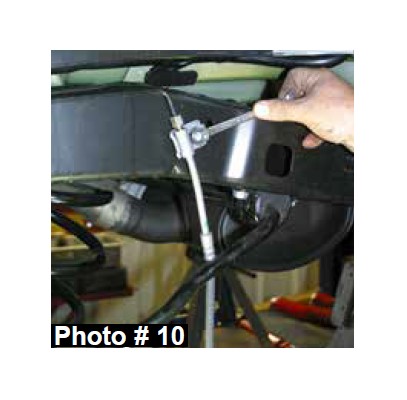
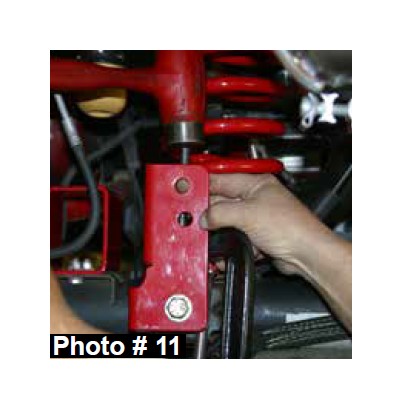
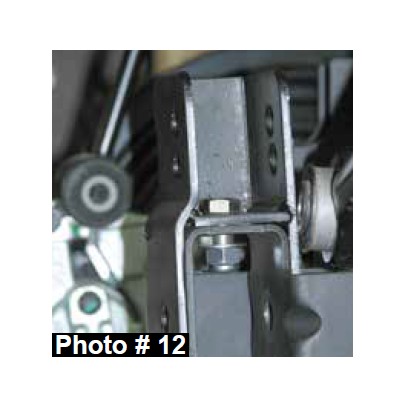
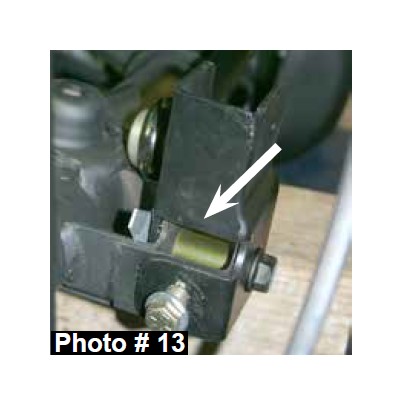
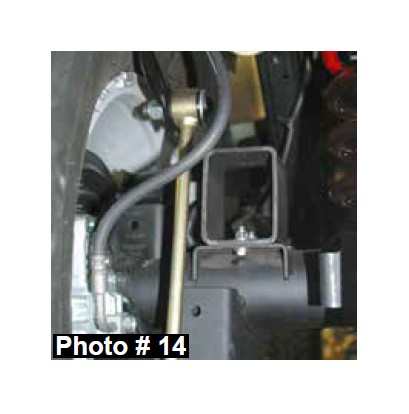
31. Install the new Skyjacker rear shocks using the supplied hardware. (See Photo # 15)
32. Install the rear tires / wheels & lower the vehicle to the ground.
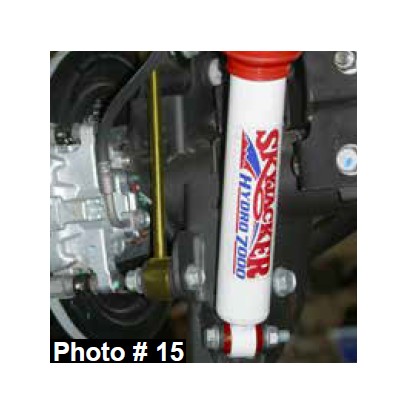
FINAL NOTES:
• After the installation is complete, double check that all nuts & bolts are tight. Refer to the following chart below for the proper torque specifications. (Do not retighten the nuts & bolts where thread lock compound was used.)
• With the vehicle placed on the ground, cycle the steering lock to lock, & inspect the steering, suspension, brake lines, front & rear drivelines, fuel lines, & wiring harnesses for proper operation, tightness, & adequate clearance.
• Have the headlights readjusted to the proper settings.
• Have a qualified alignment center realign the vehicle to the OEM specifications.
• Retorque all the bolts after the first 100 miles.
